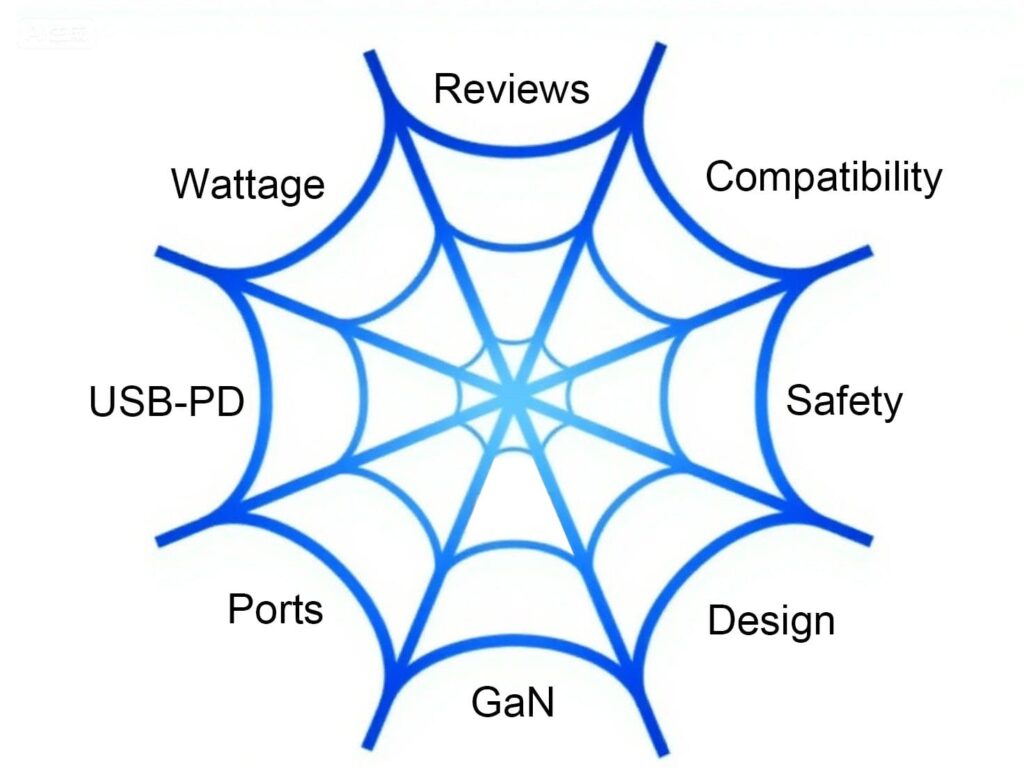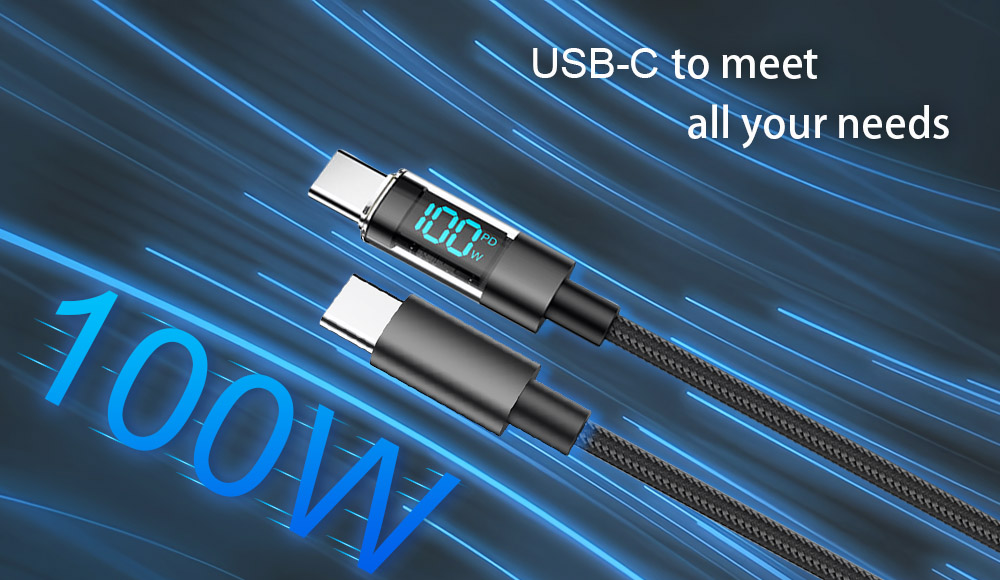
Gan Travel Chargers
Introduction: Why Your Old Travel Charger Isn’t Cut Out for Travel
Picture this: You’re in a crowded airport during a layover, your laptop battery is at 5%, and your phone isn’t far behind. You scramble for an outlet, only to find you’ve packed a tangle of slow, bulky travel chargers that take forever to power one device, let alone all of them. This modern travel nightmare is entirely avoidable.
The right travel charger is no longer a luxury; it’s a necessity. It’s the command center for your digital life on the road, capable of juicing up your smartphone, laptop, tablet, and headphones simultaneously, quickly, and safely—all from a single, compact device that fits in your pocket.
This comprehensive guide will walk you through everything you need to know to invest in a perfect travel charger for your needs, covering key specs, crucial features, and top recommendations to ensure you never face a dead device again.
Chapter 1: Understanding the Core Specifications of Travel Charger
Before you buy, you need to speak the language. These technical terms define a charger’s capability.
1. Wattage (W): The Powerhouse Metric
Wattage is the most critical factor determining charging speed. Simply put, higher wattage = faster charging, but only if your device can handle it.
Phones (iOS & Android): Most modern smartphones support fast charging between 20W and 45W. A 20W charger will fill an iPhone much faster than the old 5W brick.
Tablets: Typically require 30W to 45W for optimal charging.
Laptops: This is where power needs jump. Most modern ultrabooks (MacBook Air, Dell XPS 13) need at least 45W-65W. Larger notebooks and gaming laptops may require 100W or more.
Pro Tip: For a future-proof charger that can handle a laptop and other devices, aim for a minimum of 65W. If you’re a power user with a high-performance laptop, look for 100W+.
2. USB Power Delivery (PD): The Universal Fast-Charging Standard
USB Power Delivery (USB-PD) is a universal fast-charging protocol that allows for higher power transfer over USB-C connections. It’s what enables a small charger to power a large laptop.
Why it matters: USB-PD is the standard for modern MacBooks, Windows ultrabooks, iPads, and high-end Android phones. If your charger and device both support USB-PD, they will negotiate the fastest possible charging speed.
Look for it: Ensure any charger you buy prominently features “USB Power Delivery” support.
3. Ports: Quantity and Type
The number and type of ports determine how many devices you can charge at once.
USB-C Ports: These are essential. Look for chargers with multiple USB-C ports, as they are used for high-speed data transfer and high-wattage charging. This is where your laptop will plug in.
USB-A Ports: While older, these are still useful for charging older devices like Bluetooth headphones, some fitness trackers, or for using older cables. A good travel charger should have at least one.
Aim for a charger with 2-3 ports minimum (e.g., 2x USB-C + 1x USB-A) to avoid carrying multiple chargers.
Chapter 2: Must-Have Features for the Modern Traveler
Beyond the basic specs, these features separate good chargers from great ones.
1. GaN Technology: Smaller, Cooler, and More Efficient
Gallium Nitride (GaN) is a revolutionary semiconductor material that has transformed charger design.
Smaller Size: GaN chargers are significantly smaller and lighter than traditional silicon-based chargers with the same power output. This is a game-changer for travel.
Greater Efficiency: They waste less energy as heat, meaning they run cooler and are often more reliable.
The Verdict: In 2025, always choose a GaN charger. The price difference is minimal, and the benefits for a traveler are enormous.
2. Compact and Foldable Design
A travel charger should be, above all, travel-friendly. A foldable plug (like those from Anker or Ugreen) is a brilliant feature that protects your bag and other items from getting scratched. Compactness ensures it doesn’t block adjacent outlets in crowded airport charging stations.
3. PPS Support: The Smart Charging Protocol
PPS (Programmable Power Supply) is an advanced protocol within the USB-PD 3.0 standard. It allows for minute adjustments in voltage, which increases efficiency and reduces heat generation. This is particularly important for Samsung Galaxy smartphones (like the S-series), which use PPS for their super-fast charging (45W). If you’re an Android user, look for PPS support.
4. International Compatibility (Voltage & Plug Adapters)
A true travel charger must work anywhere.
Input Voltage: Ensure it supports 100-240V input voltage. This is standard for most quality chargers and means it will work seamlessly with any voltage from the U.S. to Europe to Asia without a bulky separate voltage converter.
Interchangeable Plugs: Some advanced travel chargers (like the Zendure Passport) come with built-in, swappable plugs for US, EU, UK, and AUS outlets. This is incredibly convenient, eliminating the need for separate plug adapters.

Compact GaN Tech charger
Chapter 3: Safety and Reliability: Don’t Cut Corners
A cheap, uncertified charger can fry your $2,000 laptop. Never compromise on safety.
Certifications: Look for safety certifications like UL (Underwriters Laboratories), ETL, CE or other?. These indicate the product has been tested and meets specific safety standards.
Protections: Quality chargers include built-in protections against:
Overheating
Overcurrent
Overvoltage
Short circuits
Brand Reputation: Stick with reputable brands known for quality and customer service, such as Anker, Spigen, Satechi, Trunker, and Belkin. Their products may cost slightly more but offer peace of mind.
Chapter 4: Top Travel Charger Recommendations for 2025
Here are some top-tier options categorized by use case:
| Product Example | Wattage | Key Features | Best For |
|---|---|---|---|
| Anker 735 Charger (GaNPrime 65W) | 65W | 3 ports (2xC, 1xA), GaN II tech, compact foldable plug | The all-rounder: perfect for a MacBook Air/Pro and two other devices. |
| Ugreen Nexode 100W Charger | 100W | 3 ports (2xC, 1xA), GaN tech, PPS support, foldable plug | Power users with a high-wattage laptop who need to charge multiple devices fast. |
| Zendure Passport III | 65W | 2 ports (1xC, 1xA), Built-in int’l plugs (US/EU/UK/AUS), GaN | The frequent international flyer who wants an all-in-one solution. |
| Anker 313 Charger (PowerPort III 20W) | 20W | Single USB-C port, incredibly compact and affordable | The minimalist traveler who only needs to fast-charge a phone. |

Lider Travel Charger
Chapter 5: Putting It All Together: Your Buying Checklist
Before you click “buy,” run through this checklist:
✅ Wattage: Does it have enough power for my laptop (at least 65W) and devices?
✅ USB-PD: Does it support USB Power Delivery for fast laptop charging?
✅ Ports: Does it have enough ports (USB-C and USB-A) for all my gear?
✅ GaN: Is it made with GaN technology for a smaller size?
✅ Design: Is it compact with a foldable plug?
✅ Safety: Does it have necessary certifications (UL, ETL, CE or other)?
✅ Compatibility: Does it support 100-240V for international travel?
✅ Reviews: Have I checked verified customer reviews for real-world performance?

More to check
Conclusion: Invest in Your Connectivity
Your travel charger is the unsung hero of your go-bag. Choosing the right one—a powerful, compact, safe, and versatile GaN charger with multiple ports—will transform your travel experience. It declutters your bag, reduces your stress, and, most importantly, keeps you connected to the world, your work, and your loved ones, no matter where your journey takes you.
Ditch the bundle of old chargers and make the upgrade. Your future self, calmly working on a fully charged laptop while everyone else scrambles for an outlet, will thank you.
Ready to find your perfect travel charger? Use the guide and checklist above to compare top-rated models on Amazon or your favorite electronics retailer today!






